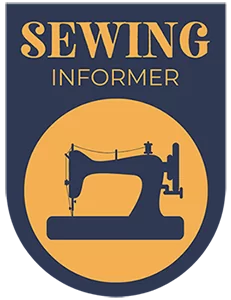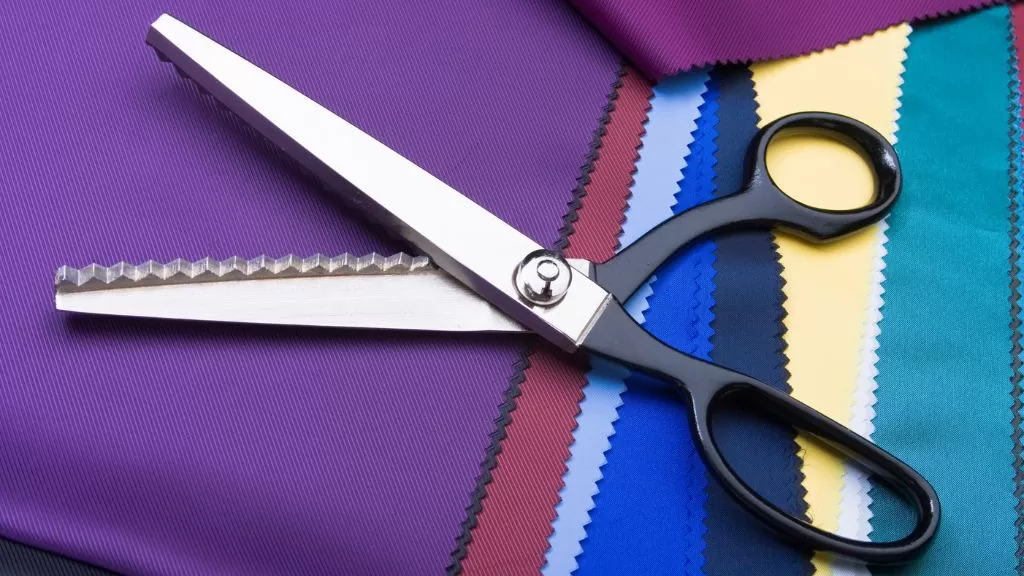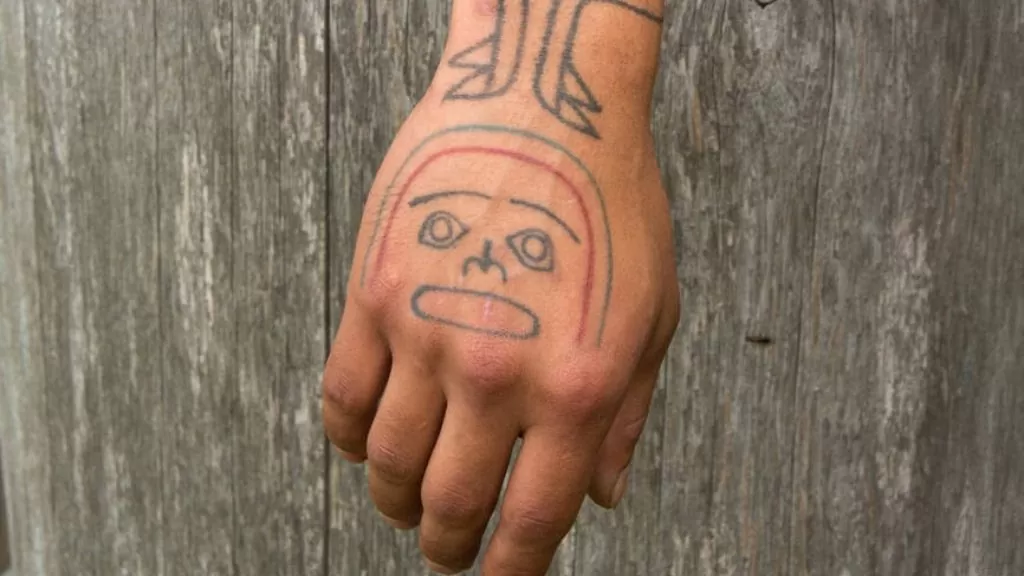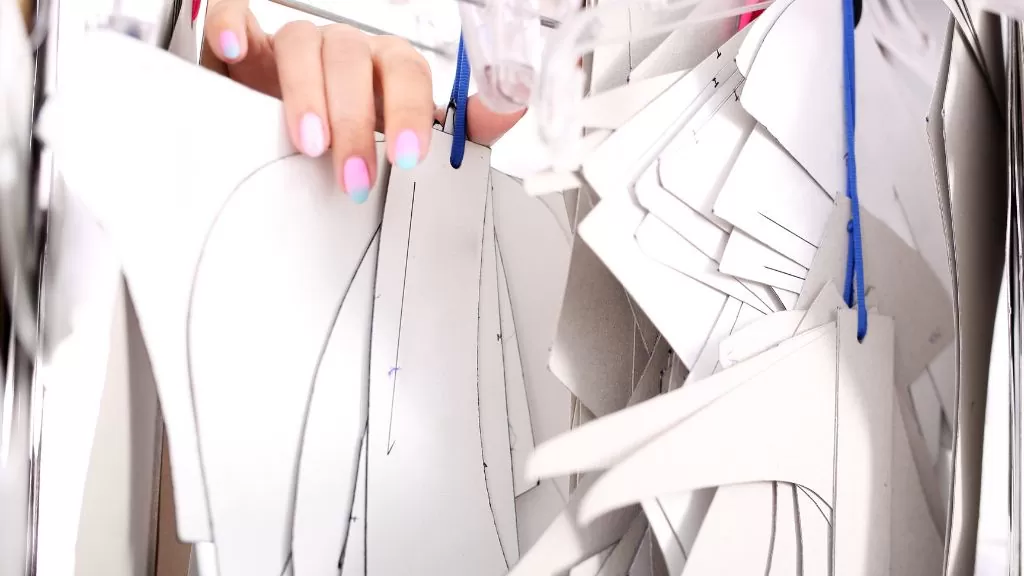Vintage sewing machines are true treasures. If you’re lucky to have an antique or vintage machine, it’s an increasingly rare and valuable item that needs to be well maintained.
Putting in the effort can be worth it. So, how to clean a vintage sewing machine?
In this step-by-step guide, you’ll learn about cleaning vintage sewing machines, removing rust build-ups, and proper aftercare.
Here are a few options to consider:
- Sewing Machine Oil
- Degreasers
- Oil Soaps
- Kerosene
- Vinegar Solutions
You’ll also learn:
- What you need to know about cleaning antique sewing machines
- The tools required
- The various methods to use
- Polishing a vintage sewing machine
- Cleaning cast iron bases
- Caring for antique Singers
What to Consider When Cleaning an Antique Sewing Machine
Older sewing machines are delicate, especially if they aren’t maintained to a high standard. Unfortunately, most people are so enthusiastic about their machines, they do more harm than good.
So, here are a few things to consider before you clean a vintage sewing machine.
The Condition of the Machine
Every sewing machine is unique. How you clean yours will depend on its condition. For instance, sewing machines with severe rust must be treated differently from ones with no rust.
It’s the same with pin rashes, surface dust, chips, and general wear and tear. Every machine needs a suitable cleaning method. You must find the right method that matches the machine’s condition.
Your Confidence and Abilities
General cleaning, such as wiping away surface dust, is simple enough. Caring for a vintage sewing machine, however, goes beyond basic cleanliness. Unfortunately, oiling gears and other such tasks might not be something you have confidence in.
There are lots of ways to damage a machine and if you don’t have the confidence or patience to clean it effectively, you shouldn’t try it. Instead, get a professional to do most of the routine maintenance work.
Educate Yourself on Vintage Sewing Machines
Antique and vintage sewing machines can work beautifully if they have been cared for properly or well restored. Before you attempt to clean your machine, however, it’s important to understand a little more about the one you own.
Doing some basic research on your exact machine will allow you to find the most effective cleaning method. You understand what is best for the machine and how to care for it in the long term.
Soft Cloths Buff Better than Tougher Rags
The type of cloth used to clean the machine may determine the results. It’s likely your sewing machine has decals and a final coat, such as a shellac finish. You do not want to disturb the decals or damage the finish. So, you need to ensure the right cleaning materials are used.
You may want to use the following:
- Soft Cloths
- Toothbrushes
- Small Paintbrushes
- Cotton Swabs
- Q-Tips
Remove Surface Dirt and Dust
Before you worry about deep cleaning and routine maintenance, you must take care of the basics. For example, use a soft cloth to wipe down the sewing machine to remove surface stains, dust, and dirt.
It doesn’t take more than a few minutes to remove surface dirt but can be crucial in keeping the machine in pristine condition.
Use Sewing Machine Oil
Ideal for most machines, sewing machine oil is a great solution to clean with. It’s perfect if you have lots of dried or crusty stains and grime that can’t be shifted. You can even use it on metal surfaces of the machine.
Soak the oil on a soft cloth and rub it over the surface dirt that can be removed. Or liberally apply it and leave it to dry overnight. It’ll be easier to remove the dried-on grime in the morning.
Use a paintbrush for those harder-to-reach areas.
Clean the Gears with Synthetic Grease
Gears must be properly lubricated to keep them running smoothly. Apply an even layer of synthetic grease to the gears and test them fully before using the machine again. Depending on the type of machine you have, try to match the gears to the appropriate grease. It’ll make a big difference to the finished product.
Oil Soap
These soaps can clean vintage sewing machines. Apply a good layer on the machine and gently wipe away the dirt. You can be left with a beautiful shine and should leave the machine looking brand-new again.
Plus, oil soap can be a gentle alternative to try.
Non-Bleach Wipes
Wipes alone won’t fully clean a vintage sewing machine but can tackle dust, smoke, and most surface stains. Plus, fragranced wipes can leave a pleasant scent behind.
Use Lubricant Oil to Clean Treadle Sewing Machine Bases
Treadle bases are beautiful but need a lot of care and attention when cleaning. While water will clean the base, it could cause significant damage to the decals, not to mention cause rust.
Use a good lubrication oil instead. Apply a few drops onto the treadle base and wipe it down with a cloth. It’ll get rid of the dirt, grime, and dust.
Cleaning Non-Rusted Bare Metal
If you don’t have a rusty machine, it will be a lot easier to clean. Typically, machine oil, water, and soap are sufficient.
Removing Rust
Rust is tricky but can be removed without causing damage to the machine. Ideally, you want to look for a penetrating lubricant that is built for rusty metal. The solutions can be applied and gently removed.
You do, however, need to be very careful how you use some of the lubricants. They can strip paintwork and cause damage to other parts of the machine. You need to use them with extreme caution and a lot of care.
Fortunately, there are many options to consider, including:
- Kerosene
- Vinegar Solutions
- Isopropyl Alcohol
- Methyl Hydrate
Removing Rust from Nickel and Chrome Faceplates
Detach the faceplate from the sewing machine base, if possible, and assess the full scale of the rust. If the rust is limited to one area, it will be far easier to tackle. So, wash the surface of the faceplate with a degreaser to remove the rust.
In extreme cases, pour the degreaser into a large container and let the faceplate soak for several hours. If the situation isn’t too dire, you should be able to rub most of the rust off. Rinse the plate thoroughly and finish it with a metal polish before reattaching it.
Be careful around decals with rust removers as they can damage them.
Cleaning Rust from the Frame and Internal Parts
Rust on the inside of the sewing machine doesn’t spell disaster. If the metal isn’t flaking or pitted, there is hope.
Take a sanding sponge and use that to gently remove the top layer of rust. Then, use a good brush to get rid of the rest. If it’s severe, a degreaser is necessary to help shift the most stubborn rust.
Cleaning a Cast Iron Sewing Machine
Depending on the age of your sewing machine, it could be made from cast iron. It’s beautiful and adds a lot of character to a machine too. If it isn’t well cared for, however, it can look beaten and in a sorry state. Fortunately, it is possible to clean it up and restore it to pristine condition.
1. The Rub Down
Begin by wiping down the machine with a soft cloth. This will remove any debris, dust, and surface stains. Once you wipe the sewing machine, you’ll be able to see the extent of the damage and which areas need to be tackled first.
2. Wipe Away Residues
Use soap and water to get rid of any musty smells and residues left behind. Don’t submerge the machine in the water, however, just gently scrub away greasy residues or stains.
3. Rinse the Machine and Thoroughly Dry It
Give the machine a good rinse to remove any missed debris and make sure to dry it properly. If you don’t dry the machine fully, rust can form.
4. Use Degreasers to Clean the Metal Areas of the Machine
There are lots of elements to a cast iron sewing machine, and each part needs to be properly cleaned. So, you want to use a good degreaser and toothbrush to clean the various parts.
5. Buff the Cast Iron
Use a soft flannel or cloth to buff the cast iron. It will come up beautifully and look very smart.
Cleaning a Cast Iron Base
One of the most overlooked parts of an antique sewing machine must be its base. Cast iron bases are gorgeous because they have a classic design that adds so much to a room.
If your machine has a cast iron base, it’s necessary to maintain it to prevent it from rusting over.
Research the Machine in Detail
You need to take extra special care with cast iron. So, you should research your specific model in detail. It’s crucial to ensure you get the right information.
Use a Gentle, Chemical-Free Soap
Many store-bought cleaning solutions have chemicals. While they might provide the best result in some instances, they could have an adverse reaction with cast iron.
Go back to basics. Use a gentle, organic soap to clean a cast iron sewing machine base.
Use a Soft Brush for a Thorough Clean
There are lots of grooves and harder-to-reach areas on a cast iron sewing machine base. You don’t want to miss any part out, even if they don’t look dirty. So, use a soft brush for most of the base and a smaller brush (or toothbrush) for those awkward areas.
Rinse and Dry with Care
Give the base a thorough scrub with soap and water, and don’t forget to rinse the suds away. You’ll also need to dry the base fully to prevent any moisture from being left behind.
Cleaning Sewing Machine Feet
Depending on the age of your machine, you might have feet and other attachments. Typically, these are overlooked as they don’t require much care. Of course, regular maintenance is crucial to keep them in excellent condition.
Unfortunately, cleaning these attachments can be tricky as they’re easily worn out and rusty. There are ways to clean these, however, and the results can be fantastic.
White Vinegar and Water
One of the best home remedies to clean a metal footplate is a water and vinegar solution. It’ll do wonders on the various attachments and can be less harsh than some store-bought cleaners.
Rub the vinegar and water solution over the feet with a cloth and leave it to work its magic for a few hours. Wipe them down and the dirt and rust should easily flake away. Just remember not to soak the feet in the solution. A small amount will be sufficient to clean the feet.
WD-40
WD-40 is a great solution because it’s effective. Spray a small amount onto the machine’s attachments and use a soft wire brush to scrub rust and dirt away.
For tougher stains, let the solution sit for 2-3 hours before removing it.
Baking Soda
Baking soda is a great remedy for cleaning metals and removing rust. Mix a teaspoon of baking soda with a few tablespoons of water so a paste is formed. Then rub it over the metal and rinse off in 30 minutes with warm water.
While you do have to be careful how long you keep the soda on the attachments, the result can be gorgeous. You can get a beautiful shine if done properly.
Clean the Attachments Regularly
This depends on how often the machine is used. For instance, if you’re a regular user, you should be wiping down and servicing the attachments once every two or three weeks. Once a week is necessary for everyday use and monthly cleaning for occasional users.
Oil Occasionally
It’s important to oil the machine periodically. This will ensure the gears run smoothly and remain in excellent condition for longer. Best of all, a few drops are all that’s needed.
If you use the machine often, oil it once every 2 months. For occasional use, once every 5-6 months should be sufficient.
Give a Good Polish to Improve the Finish
Regardless of the brand, you want to ensure the sewing machine has a great finish. So, it’s necessary to polish the machine as part of your maintenance routine. This doesn’t, however, need to be done every week or even every month, but rather every 3-to-6-months. It should be most effective that way.
So, use a polish that’s suitable for the brand of machine and a soft cloth to gently apply the polish. Be conservative and use a light touch to bring a beautiful shine to the machine.
Remember, it’ll help preserve the vintage machine and retain its value also. Of course, there are different methods, depending on the type of materials you’re working with.
Wooden Cabinets
Like any antique furniture, you want to use a polish that’s suitable for older woods. Be careful when using polish for the first time. Test them on the underbelly of the machine.
Cast Iron Bases
Cast iron sewing machine bases need to be cared for properly, especially when it comes to polishing them up. It’s important to use a polish that’s suitable for cast iron. This will offer a beautiful shine but not lose any of its original charms.
Chrome
Depending on the machine, some older models have chrome parts. To polish these, you may want to use an automobile chrome polish. Apply the polish and it’ll bring up a beautiful shine to the chrome.
Cleaning an Antique Singer Sewing Machine
Singer sewing machines can be valuable if they’re maintained well. These are some of the best sewing machines available today and are widely sought-after.
Cleaning an antique machine isn’t as daunting as it sounds, but there are a few things you need to know first.
Always Test the Finish
Antique Singer machines have beautiful decals. They stand out for the right reasons, and everyone wants to own a Singer. Unfortunately, these decals can be extremely fragile. So, you need to investigate the finish on the machine.
It can be difficult to identify the finish, so you need to test the finish. You need to find an area at the bottom of the machine and dab a small amount of rubbing alcohol on it. It has a shellac finish if the alcohol dissolves quickly; if it becomes tacky, it’s likely to be lacquer or a varnish finish.
Examine the Condition
When you know the finish of the machine, think about its condition. If the finish has cracks or scratches, it might be best to avoid polishing these areas. You could damage the finish further.
If the condition of the finish is poor, it’s time to call in an expert. This might cost a little money, but you’ll get a better finish. Remember, polishing and cleaning a Singer that has extensive damage to the finish can be very costly, especially when it’s a vintage machine.
Use Warm Water and Soap to Clean
Before you polish your antique Singer, you should clean it with warm hot and soap. You should, however, avoid soaps that contain oils or alcohol as they could damage the finish of the machine. So, be very careful about which products you use to clean the Singer.
1. Mix warm water with soap in a bucket. Ensure the soap is mixed well with the water.
2. Use a soft cloth, preferably cotton, and soak in the water. Wring the cloth out and gently wash the machine.
3. Rinse the machine with clean water and a cloth and dry the machine with a clean cloth.
Use Machine Oil
Machine oil can be used to polish a vintage Singer. Put a dab of oil onto a clean cloth and apply it in circular motions. If there are any hard-to-reach places, use a paintbrush to apply the oil.
Wax Finishes
Carnauba wax could be useful to preserve the vintage sewing machine. You only need a small amount of wax and ensure it’s buffed across the entire machine. It leaves a nice finish and can be useful for those who want to keep the machine in great condition.
Top Tips to Maintain Vintage Sewing Machines
You must be extremely careful when dealing with a vintage or antique sewing machine. Whether it’s used regularly or just as an ornament, cleaning needs to be done with an air of caution.
One wrong move and you could wipe out the value of the machine or even worse – damage it beyond repair. So, here are a few tips to help maintain and clean your machine.
Always Test Substances on the Underbelly of the Machine
A lot of people are tempted to use whatever they find on the internet without a second thought. Unfortunately, the results are unpredictable and costly.
If you ever want to use paraffin, oil, or any other cleaning substance on the machine, test it first. Dab a small amount on a cotton swab or cloth and test on the bottom or underbelly of the machine.
If there are any ill effects, they won’t be as noticeable and won’t ruin the machine entirely.
If In Doubt, Stick to the Basics
Sometimes, with old Singers, it’s difficult to be 100% confident in what you use to clean it. There are lots of cleaning solutions, but you can’t predict how the machine will react to them. Remember, every machine is different; some will react better to one solution than to others.
It’s more about the try and test method. Of course, that puts decals at risk of peeling if the solution doesn’t react well to them. So, if you are ever in doubt about cleaning or maintaining a sewing machine, stick to the basics: soap and water.
Keep the Machine Covered
Antique sewing machines are valuable items when they’re cared for properly. It’s crucial to ensure the machine remains covered when not in use. For instance, use the original cover or get a replacement.
This keeps dirt, dust, and grime away from the machine when it isn’t being used. It also prevents unnecessary damage from occurring.
Keep the Machine Somewhere Dry
When the machine isn’t being used, it’s important to store it properly. While you should cover the machine, you also need to store it in a safe location.
For instance, you want to choose somewhere in the home that’s dry and not exposed to a lot of moisture. If you can, store the machine in a cabinet or keep it on a sewing table with a dust cover over it.
Tackle One Part of the Machine at a Time
It’s easy to go overboard in your attempts to maintain or clean the sewing machine, especially with an antique model. The worst thing you can do, however, is to rush the process and do too much at one time.
Instead, tackle one area at a time. This will ensure you maintain the sewing machine properly. It’ll also prevent you from neglecting the machine.
Wipe Down after Every Use
Whether you use the machine for 10 minutes or 1 hour, it should always be wiped down after every use. This helps to maintain the machine and remove dirt that could cause problems down the line.
It’s good practice, regardless of how often you sew. Use a soft brush to clean away dust and lint build-up around the thread take-up lever and bobbin case.
Don’t forget to oil the gears once a month too.
Call in the Professionals
It’s not difficult to clean a sewing machine, even a vintage one. Unfortunately, you might not have the time, patience, or ability to maintain the machine. Instead, take it to a professional and let them tune it up. It’ll get a proper deep clean and an inspection to detect signs of damage.
Even if do regularly maintain the machine, it’s good to get a professional tune-up once a year. It’s a good preventative step to stop major repairs in the future.
Keep it Out of the Sun
A lot of people want to proudly display their beloved antique sewing machines, but there are risks in doing so. For instance, keeping the machine near a window that is flooded with sunlight all day can warp or discolor the finish within a few short weeks.
Instead, find a safe place. If you aren’t putting the machine away, at least keep it in the shade and cover it when it’s not in use. This keeps the machine in good condition for longer.
Get a Professional to Handle Repairs
If you notice a few repairs needed while cleaning your machine, you may want to hold off on these. Tackling any repairs can be difficult, regardless of how minor they initially appear.
There are lots of components to a machine and any little issue could go wrong with the wiring. It is likely to be beyond your ability. If that’s the case, get a professional.
Conclusion
Cleaning a vintage sewing machine requires care, patience, and a little know-how. It’s important to use the right tools and cleaning methods to retain the beauty of these machines.
Of course, cleaning methods vary depending on the age of the machine and its condition. There isn’t a one-size-fits-all approach. So, do your research and find what works best for your vintage sewing machine.
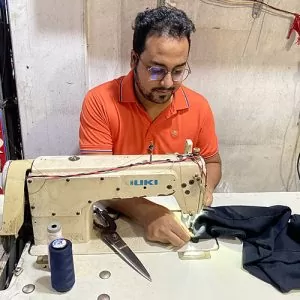
I love to sew and write! I have been doing both for many years and enjoy sharing my passion with others. I have written for both online and offline publications including Amazon and Medium, and I enjoy sewing clothes, quilts, and other items.
My writing style is engaging and lively, and I have a knack for delivering complex information in a way that is easy for everyone to follow.
